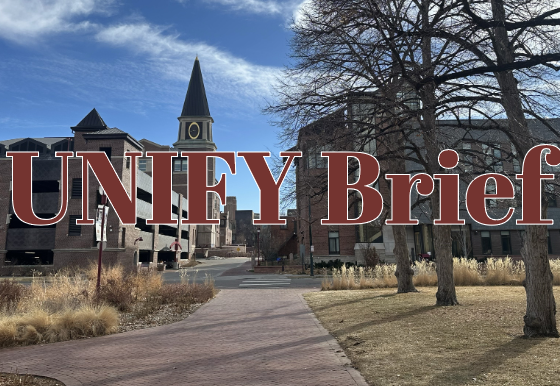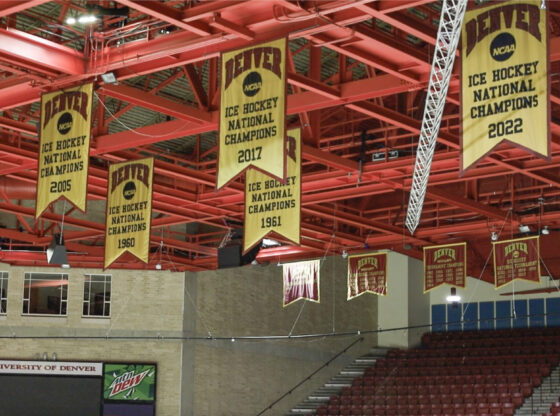This Monday, Oct. 9 is the second year that Indigenous Peoples’ Day is nationally recognized and commemorated. In 2021, President Biden formally declared that the second Monday of October will be the day the country honors Native Americans.
What’s the history?
Indigenous Peoples’ Day is a day to reflect upon and recognize the history of Native Americans, their role in the country’s history and the violence and devastation tribes endured. Individuals are encouraged to learn more about the diversity that exists within Native American tribes to better understand their communities.
The date on which Indigenous Peoples’ Day is recognized either joins or replaces Columbus Day altogether. Columbus Day was an official holiday that celebrated explorer Christopher Columbus’ efforts in discovering the Americas, which often disregarded the violence against indigenous populations he left in his wake.
The United States first celebrated Columbus Day in 1934, and for nearly 90 years Americans have partaken in a holiday that does not recognize the entire truth of the country’s history. It failed to honor the Native American tribes who have spent years fighting for representation and recognition. It neglected the violent truths that come with the founding of our country — the ones that our history books fail to mention.
For Italian Americans, Columbus Day is a day of celebrating the contributions the Italian community has made to the country. But for the Native American community, Columbus Day served as a day to recognize their survival of Columbus and all that followed.
How is Indigenous Peoples’ Day celebrated?
There is no “one way” to honor and recognize Indigenous Peoples’ Day. For Native Americans, the day is not entirely one of celebration. Though recognition is a win for their communities, the fight for representation does not stop.
The day is filled with protests: for Columbus memorials to be taken down, for environmental justice to better preserve and protect their lands, for the return of stolen lands and to demand answers on missing Indigenous women whose cases are often never solved.
A current Native Student Alliance (NSA) member, Lauren McHorse, is a first-year majoring in political science who was born in New Mexico and is part of the Dinè and Taos Pueblo. McHorse went from being one of the few indigenous students at school to being one of many. Through McHorse’s involvement with NSA and her education, she hopes to give back to her community.
“I am majoring in political science with the intention of going to DU’s law school to later work on cases on missing indigenous women… my education is my biggest blessing and I want to give back to the community,” McHorse said.
DU’s tricky history.
The University of Denver was built on the lands of the Arapaho and Cheyenne tribes. DU was founded by John Evans, a former Colorado territory governor whose proclamation to kill Indigenous people resulted in the Sand Creek Massacre.
DU has since sought to properly honor the painful plight that was inflicted upon Indigenous people. A decade ago, DU’s John Evans Study Committee first gathered to investigate Evans’ role in the Sand Creek Massacre, releasing their results 14 months later. In 2014, the report found could not ignore Evans’ pivotal role in the Sand Creek Massacre and determined he was significantly culpable.
In 2016, The Native American Advisory Council (NAAC) was founded. The purpose of the council is to provide strategic and expert advice on how DU can better support, serve and honor the Native American community in all sectors.
One of the biggest advocates and support systems on campus is DU’s Native Student Alliance (NSA) whose mission strives to promote awareness and allies at DU.
NSA’s current co–chairs are Camilla Rivera and Rosie Molina. Rivera was born in Chile and is a fourth year majoring in psychology and double minoring in sociology and critical race and ethnic studies (CRES). Molina is a third year majoring in CRES and minoring in political science. Together, their mission for NSA is to create visibility for their organization.
“I hope NSA is able to create an inclusive community and a space where indigenous identifying students can come together … NSA is meant to be a space for us to be indigenous,” Rivera said.
“My main goal for NSA is to celebrate native joy and celebrate the community of native people who laugh together, dance together and sing together… Native joy is the biggest goal and making sure our students are successful academically and mentally.” Molina said.
In 2020, DU released a response to students regarding their commitments to Native and Indigenous Communities. In the statement, DU promised to reinstate the Native American Community Advisory Board (NACAB), increase engagement with Indigenous communities on campus and across Denver and eliminate the Pioneer moniker by 2021. The moniker is still prominent on campus and the university is nowhere close to removing it. The recent rebranding focused on the school’s logo and removed 1864, the year of the Sand Creek Massacre and DU’s founding, from merchandise. A progress report on those promises has yet to be released.
“We [NSA] are actively speaking against the Pioneer moniker and the use of it, [which] has been happening for decades now. Ever since NSA started, the conversation surrounding the Pioneer has always been a thing…. This is another important motive that NSA has on campus [which] is to continue the conversation and share the real history about the school.” Rivera said.
“The moniker is a constant reminder… the Pioneer moniker not only affects native students but also BIPOC students. It’s an action that represents cultural imperialism.” Molina said.
How does DU commemorate Indigenous Peoples’ Day?
NSA spearheads DU’s recognition of the day. On Monday, Oct. 9, NSA held the annual Indigenous Peoples’ Day celebration on the Campus Green. The event included traditional dancing, food and music on campus. The event also served as an opportunity for students and allies to learn more about Indigenous cultures.

Is Indigenous Peoples’ Day enough?
Declaring Indigenous Peoples’ Day as a day of observance is the first step in providing the Native American communities across the nation with the visibility, power and recognition they have long deserved and have historically been denied. There is more that our DU community and our country need to do in order to fully right the wrongs Indigenous people have endured for over a century. One day is not enough to commemorate and honor the Indigenous community. Though November is Native American Heritage Month, there are still many disparities that exist between the Indigenous community and other populations. Native American rights must be protected and preserved.
As a community, DU needs to come together to respect the Indigenous community and fulfill the promises that are long overdue. As a country, we must do better at recognizing the trials that the native community has overcome by teaching accurate representations of history. More must be done to fully recognize the native populations across the country. Indigenous Peoples’ Day is a start, but it is not the end.











